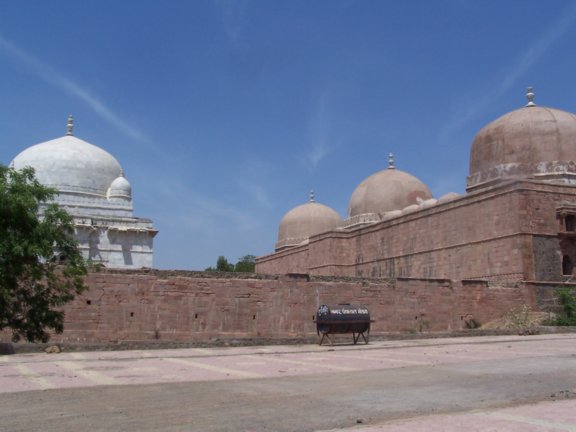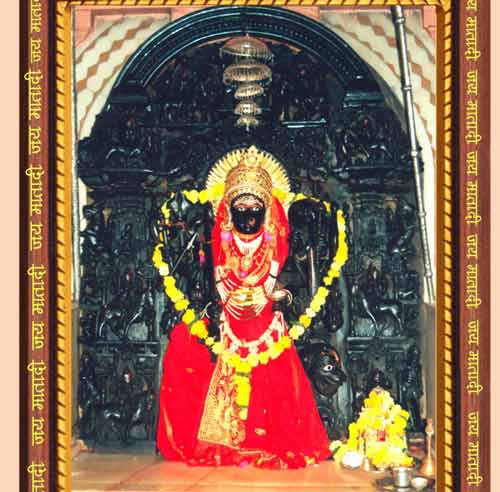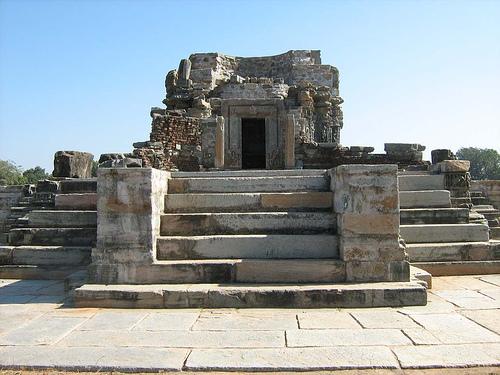
History of banswarabanswara is a District of the state Rajasthan in India. Maharawal Jagmal Singh established the princely state of banswara , Rajasthan . banswara derives its name from the abundance of "bans" or bamboo forests. The Mahi River, which flows through banswara is home to many islands. For this reason, the city of banswara is also known as City of Hundred Islands . The banswara district forms eastern part of the region known as Vagad or Vagwar. The district was formerly a princely state ruled by the Maharavals. It is said that a Bhil ruler Bansia ruled over it and banswara was named after his name. Bansia was defeated and killed by Jagmal Singh who became the first Maharaval of the princely state.  banswara, it is likely , derived its name from bans or bamboo shoots, which once grew in abundance around the places. It was a part of the territory known aas Bagar during the regin of Udai Singh (who succeeded to the throne sometime between 1496 and 1498 AD) and is said to have been founded by Jagmal, the younger son of Udai Singh who, being much devoted to his queen, the mother of Jagmal and wanting to see him installed as a ruler of a separate State, had partitioned Bagar between the two claimant sons before his death. banswara remained the capital of erstwhile State of the same name for about four centuries thereafter. There was a revolt by Bhil tribals, led by the social reformer Govindgiri, in the year 1913. The revolt resulted in the "Mini Jallianwala Bagh Kand", a massacre where hundred of Bhils were shot at. The massacre took place at Mangarh hillock where the Bhils were holding a peaceful meeting. The site, now called the Mangarh Dham, has since then assumed sanctity. The year 1949 saw a merger of banswara state and Kushalgarh chieftainship in Greater Rajasthan. Since then, banswara has been regarded as a separate district. With the merger of the princely states in the Union of India, the banswara State and Kushalgarh chiefship got merged in the Greater Rajasthan in 1949 and banswara was carved out as a separate district by merging these principalities. The present district was formed on August 15, 1949 CE as a part of Udaipur division of the newly formed United State of Rajasthan by merging the Princely State of banswara and the Chiefship of Kushalgarh, both of which were part of Mewar & Southern Rajputana States Agency before independence.  banswara district is divided into 3 sub-divisions, which are further divided into 5 tehsils and 8 development blocks. banswara sub-division consists banswara and Garhi tehsils, Ghatol sub-division consists Ghatol tehsil and Kushalgarh sub-division consists Kushalgarh and Bagidora tehsils. The 8 development blocks in the district are: Talwara, Garhi, Ghatol, Peepal Khunt, Bagidora, Anandpuri, Kushalgarh and Sajjangarh. Gujarat and Madhya Pradesh surround the district of banswara, situated in the basins of the Aravallis. Forming the eastern part of the region known as Vagad or Vagwar, the district has a rich flora and fauna. A major part of the population of banswara consists of the Bhil tribals. Bansia, a Bhil ruler, once ruled the city of banswara. It is believed that the city is named after him only. However, Jagmal Singh defeated Bansia and became the first Maharaval of banswara. banswara District covers an area of 5,037 square km, which is about 1.47% of the entire Rajasthan state. The district headquarters are located in the city of banswara. As boundaries it has the Udaipur District on the north, the Chittorgarh District on the northeast, the state of Madhya Pradesh on the east and southeast, the state of Gujarat on the southwest, and the Dungarpur District on the west. The District of banswara is situated in the Mahi River basin. The Mahi originates in the Vindhya Range of Madhya Pradesh, comes into the district from the southeast and flows north towards the northern end of the district, where it turns southwest and forms the boundary between banswara and Dungarpur districts before entering Gujarat and merging with the Gulf of Cambay. banswara district is included under the Vagad region of southern Rajasthan, which incorporates banswara and Dungarpur districts. Tribals, mainly those of the Bhil community, principally inhabit the region. The flora and fauna of banswara District is very rich. The forests contains primarily teak. The wildlife consists of a great diversity of wild animals like leopard, chinkara and the like. Birds commonly found in the region are fowl, black drongo, partridge, grey shrike, bulbul, parrot, green bee-eater and many others.  It is also named so because of the bamboos (Bans) which were found in abundance in the forests. In 1913 some bhils revolted under the headship of a social reformer Govindgiri and Punja which was suppressed in November, 1913. Hundreds of Bhils were shot dead at the Mangarh hillock where they were holding a peaceful meeting. The event is also known as the Mini Jalianwala Bagh massacre. The place has become sacred and is better known as the Mangarh Dham. Another theory concerning banswara is that the district was named so because of loads of bamboos (bans) that grow in its forests. banswara in Rajasthan, India is also known by the name of 'Lodhikashi' or Little Kashi. This is because of eleven and a half Swayambhoo Shivlings that are present here. banswara travel and tourism will take you closer to the unspoilt and untouched culture of this tribal district. A mix of Gujarati, Rajasthani, Malwi and Mewari cultures, the Vagdi culture of banswara is sure to win your heart. The district is named after the former Princely State of banswara. There are two traditions regarding the etymology of banswara. According to one tradition, it is derived from the name of the Bhil chief Bansia who ruled over this area before being killed by Maharaval Jagmal Singh in 1529 CE. According to the other tradition, the name is derived from the Bans Vara (the country of bamboos) due to the abundance of bamboos in the dense forests of this region. |

